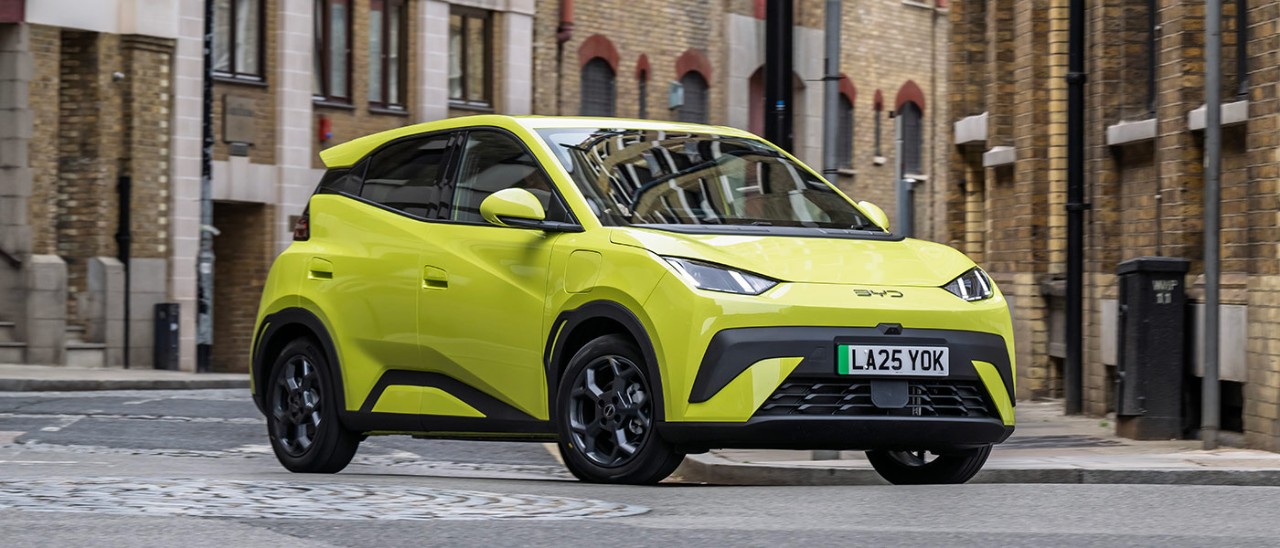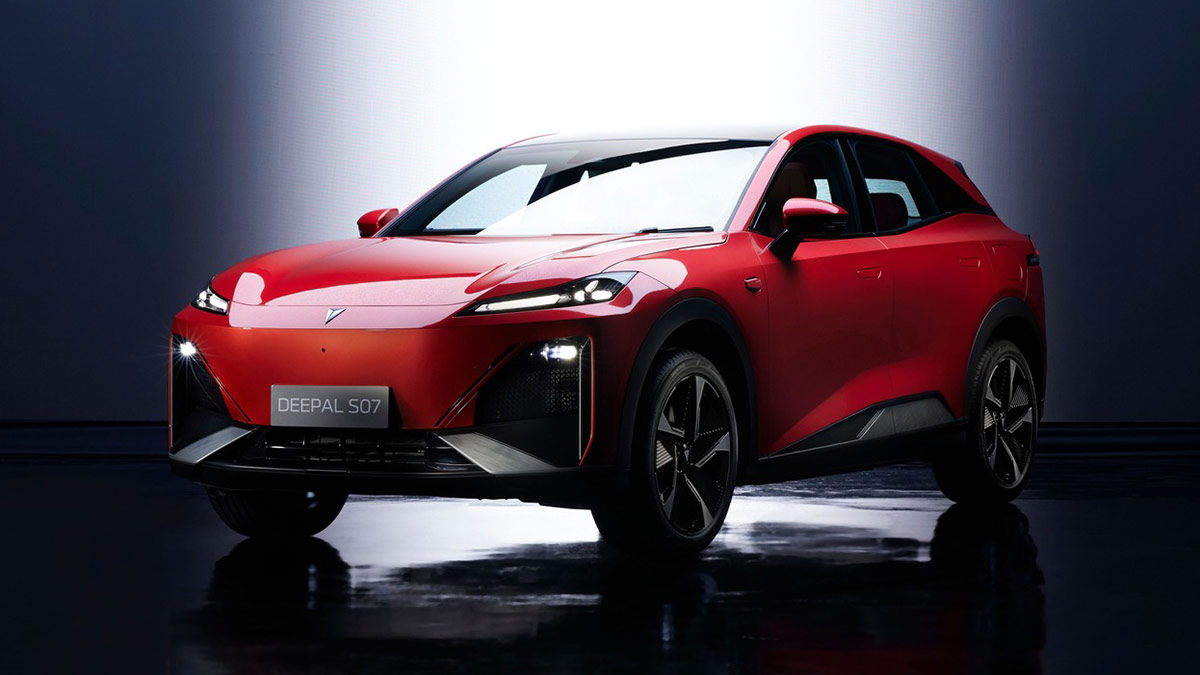Do electric vehicles last as long as petrol or diesel cars? This guide explores how long EV batteries and motors really last - and how you can extend their lifespan.
Questions to ask when you test drive an electric car or hybrid

So you’re looking for a new hybrid, plug-in hybrid or electric car. Here's a guide to what you need to know before testing, buying and driving away in your new set of wheels.
Australia’s electric vehicle market continues to grow, with sales more than doubling each year since 2020. The Electric Vehicle Council’s State of EVs 2025 report shows EVs now account for 12.1 per cent of all new car sales, up from 9.61 per cent in 2024.
With more than 120 electric and plug-in hybrid models now available, Australian consumers have a wider range of choices than ever before. Many buyers are drawn to these vehicles by their lower running costs, reduced emissions, and enhanced performance.
However, if you’re considering your first electric car, plug-in hybrid, or hybrid, it’s important to recognise that the experience is quite different from purchasing a traditional petrol or diesel model.
Luckily, RACV’s Motoring Editor Andrea Matthews has road tested a wide range of models and can help keep you on the right road to finding your dream car.
"Taking an EV or hybrid for a test drive is a valuable way to discover if the vehicle truly suits your lifestyle and preferences as a car buyer,” Matthews explains.
Buyers should carefully research finance options, such as green loans and novated leasing, and consider practicalities like charging access, warranty details, and servicing costs.
RACV regularly updates guides and reviews to help members navigate these choices, reflecting the fast-evolving landscape of electric and hybrid vehicles.
More: Research and compare different electric cars specs and features
What you need to know before test driving an electric or hybrid vehicle
What are the key considerations if contemplating the switch?
"First, consider your charging options," Matthews says. “Will you be plugging in at home, or are there stations near you?”
While you will not incur fuel costs, it is important to account for potential increases in your utility bills when charging at home. “You can charge a battery off a regular household socket, but it’ll be quite slow, so consider investing in a home charging station,” Matthews says.
Choosing an electric vehicle can be the first step in a broader electrification journey. By pairing your EV with rooftop solar panels and a home battery, you can power your car with renewable energy, and help cut household energy bills.
Matthews advises that you should take into account many of the same factors you would consider when test driving a petrol or diesel vehicle. “Which manufacturers do you find most appealing? What body style best suits your needs? Most importantly, consider who will be using your electric vehicle and for what purpose," she says. "Ultimately, making the switch only makes sense if your chosen electric vehicle can meet the demands of your everyday life.
RACV Car Match makes it easy to research and compare different electric cars at varying prices, whether they're SUVs, sedans, utes or hatches.
Deciding how to fund your car
One of the biggest decisions you’ll face when getting a new car is how to pay for it, especially if buying it outright isn’t an option. For most people, this means looking at car finance options. The two most common ways to fund a car in Australia are taking out a car loan or entering into a novated lease. It is also worth finding out what EV rebates, discounts and incentives are available in your state.
What is a green car loan?
RACV offers Green Car Loans specifically for the purchase of electric vehicles (EVs). These loans are designed to support the transition to cleaner transport by providing competitive finance options for both new and used battery electric vehicles. Green car loans generally offer a discounted interest rate.
Key features typically include a fixed interest rate, no ongoing fees, and flexible loan terms. Eligibility criteria apply, and the loan amount and term can vary depending on the applicant’s circumstances and the vehicle’s value. Additional benefits, such as Emergency Roadside Assistance, may be included, but these are subject to change and should be confirmed at the time of application.
What is a novated lease?
A novated lease is a bit different. This is a three-way agreement between you, your employer, and a leasing company. Your employer makes the lease payments from your pre-tax salary, which can lower your taxable income. At the end of the lease, you can usually choose to buy the car, upgrade, or hand it back.
More: The differences between novated car leases and car loans
What do I need to know about battery efficiency and driving range?
“Instead of a fuel economy number, you’re looking at an energy efficiency number,” Matthews says. “If it’s a lighter vehicle with a smaller battery, it’s typically going to be more efficient, whatever the advertised driving range.”
Driving range isn’t that big a deal, Matthews suggests. “While range anxiety still comes into play for many people considering an EV, I always say you wouldn’t be bothered if your petrol car only did 400km on a tank if your commute is only 80kms a day. Where some car buyers get into trouble is over-speccing their car, driving around a big, heavy battery they don’t need.”
An electric vehicle can create its own fuel, too. “Regenerative braking harnesses the energy expended when slowing down so that it can be used or stored.”

The 2025 Deepal S07 electric medium SUV has a 79.97kWh battery that enables a 475km range (WLTP).
What budget am I looking at?
While price point used to be one of the biggest stumbling blocks for many Australians, that’s no longer the case.
“Prices have come down to the equivalent of a petrol or diesel car without making any compromises,” Matthews says. “With more people having solar panels and batteries, thanks to government incentives, EVs start to make much more sense.”
RACV Car Match helps compare the cost of different models, financing options and repayment costs. Don’t forget to factor in warranty, servicing and insurance costs.
“It’s not just a straightforward decision between a petrol and diesel, or electric,” Matthews says. “Look beyond the initial purchase price and consider all running costs."
More: Australia's cheapest electric cars
What’s the difference between an electric car and a hybrid?
“Plug-in hybrids are technically the best of both worlds, running on electric mode or doing 900km because it’s got the tank on board, too,” Matthews says. “But they have complex systems and can be just as expensive as diesel when it comes to servicing them.”
Traditionally, EVs don’t have as many moving parts. “That can make them a more affordable option to own and maintain.”
What should I consider when booking a test drive?
Matthews suggests making an appointment at a dealer rather than turning up without notice. “That way, they can ensure they have all the cars you want to check out," she says. "I recommend test-driving at least five to six different models to work out what best suits your driving style.”
It's wise to test-drive vehicles that fall within your budget. When deciding between brands, compare models that are similarly priced to ensure you’re making a fair assessment.
On the day, make sure you’re relaxed and dressed. Don’t forget to bring your licence and supplementary ID. “You may find it useful to get a friend or family member to accompany you for a second opinion," Matthew says.
More: Compare up to 3 cars and see the specs, features, ratings and running costs side-by-side.
What do I need to know when test-driving an electric vehicle?
Most EVs and hybrids feature advanced driver-assistance systems, digital interfaces, and sometimes non-traditional controls, such as indicator buttons instead of stalks in certain Tesla models.
“While everything is typically quite streamlined in an EV, with Tesla basically eliminating buttons, some conventional manufacturers have carried over the look and feel for their EV cars, so it’s worth considering which approach appeals most to you,” Matthews suggests.
“Typically, the controls are via a touchscreen, and that can be quite a complicated process to get your head around,” Matthews adds. “Make sure you take the time to familiarise yourself, talking it through with the salesperson before you go for a spin, or have them accompany you.”
EVs have similar driver assistance safety tech to combustion models, but often go further on the infotainment front. The ability to switch on an E pedal is another key difference. “When you lift off the accelerator, your brakes automatically come on, a bit like dodgem cars,” Matthews says. “That really comes into its own if you’re doing a lot of city driving.”
Aim for a route that's as close to your daily driving experience as possible. If test-driving a hybrid or plug-in hybrid, it’s important to experience both electric and petrol modes because each offers a distinct driving feel, performance, and efficiency.
What about safety when I’m out on the road?
Before you take off, adjust the driver’s seat for comfort, and the mirrors for visibility, and make sure you're familiar with the main switches and key safety features, such as lane-keeping assist.
Be mindful that EVs tend to accelerate more quickly and smoothly than petrol and diesel cars. “You’ve basically got no lag and the car responds instantly when you press the throttle,” Matthews says. “Because of this, it’s important to watch your speed, especially if you’re not used to the sensation.”
Familiarise yourself with regenerative braking, as it feels different to conventional brakes. Practise smooth stops and ask the dealer how to adjust the settings if available. EVs are heavier than petrol or diesel cars due to their batteries, so allow extra space for stopping.
Finally, EVs are much quieter, which means pedestrians and cyclists may not hear you approaching. Stay alert, especially in busy areas or car parks.
Even experienced drivers need time to adapt to EVs. Take it slow, and don’t hesitate to ask questions or request a longer test drive if needed.
More: What it feels like to drive an EV for the first time
R.A.C.V. Finance Limited ABN 82 004 292 291 Australian Credit Licence No. 391488. RACV Finance is subject to RACV lending criteria. Conditions, fees and charges apply.
Advice given in this article is general in nature and is not intended to influence readers’ decisions about financial products. You should always seek your own professional advice that takes into account your own personal circumstances before making financial decisions.


